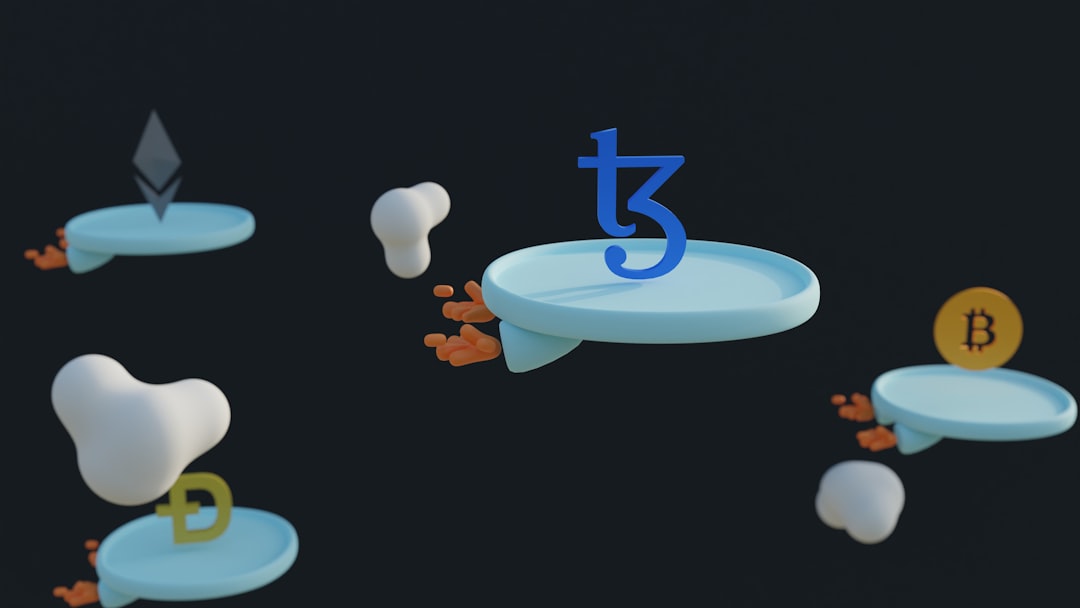Unlocking Passive Income with Fractional Tokenized Assets

Imagine a world where owning a piece of a luxury yacht, a commercial billboard, or a prime piece of real estate no longer requires a hefty upfront investment or a lengthy legal process. In this landscape, you can invest in a fraction of an asset, receive a share of its income, and trade that fraction on a global market all in a matter of minutes. This is the power of tokenized assets, a frontier that is reshaping the way we think about ownership and passive income.
Tokenization turns real-world assets into digital tokens on a blockchain. Each token represents a quantifiable portion of the underlying asset, complete with legal recognition and a clear ownership trail. By converting an asset into a series of tokens, it becomes divisible, tradable, and more liquid than traditional forms of ownership. Investors can purchase tokens using fiat or cryptocurrency, holding a verifiable stake that can be transferred, sold, or held indefinitely. Because blockchain records are immutable, every transaction is transparent and tamper-proof, giving investors confidence that their holdings are accurate and secure.
Why Tokenization Matters
The core advantage of tokenization is liquidity. Traditional assets such as fine art or high-value real estate often remain locked in long-term contracts that prevent easy transfer of ownership. Fractional ownership removes that bottleneck by enabling each token to be sold on secondary markets. This liquidity reduces entry barriers, allowing smaller investors to participate in high-value markets. Moreover, tokenization eliminates many of the operational costs associated with buying and selling assets, such as brokerage fees, legal paperwork, and escrow services. The automation provided by smart contracts ensures that dividend distributions or rent receipts are executed automatically according to predefined rules, minimizing the need for intermediaries and speeding up cash flow.

Another key benefit is diversification. Investors can spread risk across a broader portfolio by owning fractions of multiple assets, from commercial real estate to infrastructure projects, all represented by tokens. Diversification reduces the impact of a single asset’s performance on overall returns. Additionally, tokenization opens up new markets: institutional investors can access small, high-quality assets that were previously only available to private equity or family offices. The democratization of access not only increases capital flows into underutilized assets but also promotes financial inclusion on a global scale.
Steps to Create a Fractional Tokenized Asset
-
Identify a Suitable Asset
The asset must have clear ownership documentation and be amenable to division. Real estate, shipping containers, or even art collections are common choices. The asset should also generate a predictable income stream, such as rental payments or product sales. -
Legal Structuring
Work with legal counsel to create a legal entity that owns the asset. This entity will issue the tokens, and the legal framework must satisfy securities regulations in the relevant jurisdictions. Many jurisdictions now provide specific guidelines for security token offerings (STOs). -
Choose a Blockchain Platform
Select a blockchain that supports smart contracts and complies with regulatory standards. Popular choices include Ethereum, Polygon, or more specialized platforms like Polymath or Ethereum’s layer-2 solutions. -
Token Design
Decide on the token standard (e.g., ERC-20, ERC-1155) and the number of tokens to issue. Each token should represent an equal fractional ownership share. Smart contracts are programmed to handle transfers, dividend distribution, and compliance checks. -
KYC/AML Integration
To meet regulatory compliance, integrate Know Your Customer and Anti-Money Laundering procedures into the token issuance platform. This ensures that only verified participants can acquire tokens. -
Launch and Secondary Market Placement
List the tokens on a regulated token exchange or a decentralized exchange (DEX) that supports compliant trading. Provide investors with a clear disclosure package detailing the asset’s performance, risks, and income expectations. -
Ongoing Management
Automate income distribution through smart contracts. Use escrow services or trusted third parties to manage operational aspects of the asset, such as maintenance for real estate or logistics for shipping containers.
Case Study: A Real Estate Token
Consider a boutique hotel in a major tourist city. Traditionally, buying a share of the hotel would require a substantial deposit and a complex legal arrangement. By tokenizing the hotel, the owning company issues 10,000 tokens, each worth 1% of the hotel’s equity. Investors can purchase tokens through a token sale, receiving a share of the hotel’s nightly revenue automatically distributed each month via smart contracts. Because the tokens are listed on a regulated exchange, investors can sell their stake at any time, turning what was once illiquid real estate into a tradable asset. The hotel’s management uses a third‑party property management firm, ensuring that operational details do not burden token holders. This model demonstrates how passive income flows from everyday hotel operations can be captured by a diverse, global investor base.

The hotel’s token holders see a steady stream of dividends that correlate with occupancy rates and room pricing, providing a tangible, passive income source. At the same time, the liquidity of the token market offers flexibility for investors who wish to exit before the property’s value peaks.
Passive Income Streams from Tokenized Assets
-
Rental Income
Token holders receive a proportion of rental receipts, distributed automatically. This is especially effective for residential or commercial property tokens. -
Royalty or Licensing Fees
In intellectual property or media assets, tokens can represent a share of licensing revenue or streaming royalties. -
Dividend Distribution
For tokenized shares of a company, investors receive dividends that reflect corporate earnings. -
Yield Farming
Some platforms allow tokenized assets to be used as collateral in decentralized finance (DeFi) protocols, generating yield from lending or liquidity provision. -
Project Financing Returns
Infrastructure tokens often come with structured repayment schedules, offering fixed or variable interest payments.
By diversifying across these income mechanisms, investors can create a portfolio that balances risk and return while generating steady cash flow.
Risk Management and Regulatory Landscape
While tokenized assets promise high potential returns, they also carry unique risks. Market volatility, regulatory changes, and the technological reliability of smart contracts all affect investor outcomes. A robust due diligence process is essential, including:
- Technical Audits of smart contracts to detect vulnerabilities.
- Legal Assessments to ensure compliance with securities laws and cross-border regulations.
- Asset Valuation to confirm that token pricing reflects intrinsic value and future income potential.
Regulatory bodies worldwide are actively shaping the framework for security tokens. The U.S. Securities and Exchange Commission, for instance, has clarified that tokens representing shares in a business are securities and must comply with existing registration or exemption rules. European regulators have introduced the Markets in Crypto-Assets (MiCA) framework, which sets standards for issuers and exchanges. Staying abreast of these developments and partnering with licensed custodians and exchanges mitigates regulatory risk and protects investors.
In addition to compliance, operational risk remains significant. Tokenization relies on third‑party services for property management, tax compliance, and dispute resolution. Selecting reputable service providers and embedding clear terms in smart contracts can reduce operational friction.
The final stage involves continuous monitoring. Asset performance, market sentiment, and regulatory shifts should be tracked in real time. Many token platforms provide dashboards that update token valuations, income distributions, and compliance status. By maintaining vigilance, investors can respond swiftly to changing conditions, preserving their passive income streams.
Finally, understanding that tokenized assets represent a new paradigm, investors should approach them with both excitement and caution. The potential for democratized investment, fractional ownership, and automated income streams is immense, but so is the need for careful evaluation and risk mitigation. With the right tools, partnerships, and ongoing education, one can navigate this emerging landscape and unlock a steady flow of passive income.
Through tokenization, the dream of owning a slice of high-value assets and earning from them without daily management is becoming a practical reality. The next step is to research specific token projects, evaluate their legal structures, and assess how they align with your financial goals. By stepping into this digital frontier, you position yourself at the cutting edge of passive wealth creation.

Jay Green
I’m Jay, a crypto news editor diving deep into the blockchain world. I track trends, uncover stories, and simplify complex crypto movements. My goal is to make digital finance clear, engaging, and accessible for everyone following the future of money.
Discussion (12)
Join the Discussion
Your comment has been submitted for moderation.
Random Posts

Future-Focused Investing - Turning Objectives into Wealth
Turn vague dreams into wealth by setting SMART goals, defining exact amounts and timelines, then disciplined planning and investing that grows with you.
1 year ago

Beyond Short Term Fluctuations Crafting a Long Term Investment Roadmap
Ignore short term swings. Build a long term roadmap that ties your investments to life goals, turning volatility into an ally that steadily grows your wealth over time.
4 months ago

Diversification Strategies That Improve Risk Adjusted Returns
Learn how smart diversification, beyond simple spread, boosts Sharpe and Sortino ratios, protecting growth while smoothing volatility.
10 months ago

Smart NFT Strategies for Reliable Income and Tax Efficiency
Build a passive NFT portfolio with diverse assets, smart royalty management, and tax, aware structuring to turn tokens into reliable income while keeping taxes low.
1 week ago

Integrating Wallets with Staking Tools Step by Step
Learn how to connect your wallet to staking tools in clear, simple steps, update firmware, secure your seed, choose a trusted platform, and start earning rewards safely.
1 month ago
Latest Posts

Tax Strategies for Long Term Passive Earnings
Learn how smart tax planning can boost your passive income: choose efficient vehicles, use shelters, time gains, and keep more of what you earn.
1 day ago

Passive Income Education Through Legal, Tax, and Risk Management
Turn a side hustle into lasting, hands, off wealth by mastering legal structure, tax strategy, and risk protection, the three pillars that safeguard capital and ensure steady dividends.
1 day ago

Crypto Exchange Basics for Steady Income
Build steady crypto income by defining clear goals, choosing the right exchange tools, and sticking to a disciplined strategy for consistent returns.
2 days ago

